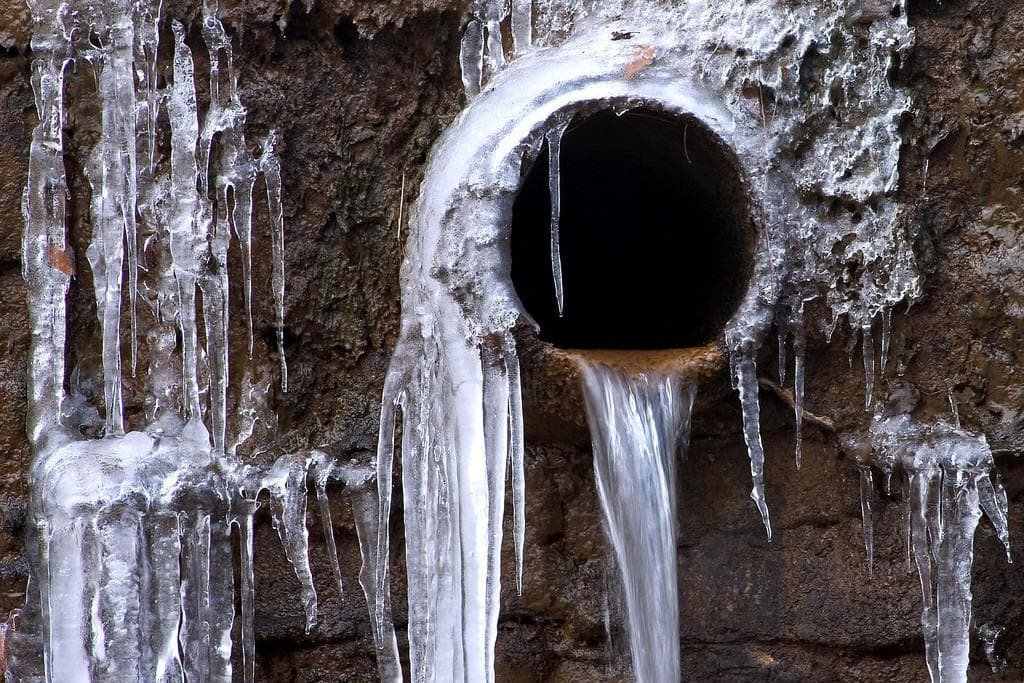Protect Against Frozen Pipes in Winter: Expert Advice
Protect Against Frozen Pipes in Winter: Expert Advice
Blog Article
Presented here on the next paragraphs you can get a good deal of wonderful advice on the subject of 6 Ways to Prevent Frozen Pipes.
:strip_icc()/snow-outdoor-faucet-pipes-4af65d1e5e904fb1aa7bf74071fe5d89.jpg)
Winter can wreak havoc on your plumbing, specifically by freezing pipelines. Below's just how to prevent it from happening and what to do if it does.
Introduction
As temperatures drop, the risk of frozen pipes increases, potentially bring about costly repairs and water damages. Understanding exactly how to prevent frozen pipelines is vital for home owners in chilly climates.
Prevention Tips
Protecting prone pipelines
Wrap pipelines in insulation sleeves or make use of warm tape to protect them from freezing temperature levels. Focus on pipes in unheated or outside locations of the home.
Home heating methods
Maintain interior areas sufficiently warmed, specifically locations with pipes. Open up closet doors to enable cozy air to circulate around pipelines under sinks.
How to identify frozen pipes
Search for reduced water flow from faucets, uncommon odors or sounds from pipelines, and noticeable frost on revealed pipelines.
Long-Term Solutions
Structural adjustments
Consider rerouting pipelines far from exterior walls or unheated areas. Add added insulation to attics, cellars, and crawl spaces.
Updating insulation
Invest in top quality insulation for pipelines, attic rooms, and wall surfaces. Proper insulation assists maintain constant temperature levels and minimizes the risk of frozen pipes.
Shielding Outside Plumbing
Garden hose pipes and outside faucets
Disconnect and drain yard hose pipes before winter. Mount frost-proof spigots or cover outdoor taps with insulated caps.
Comprehending Icy Pipes
What creates pipes to ice up?
Pipes ice up when revealed to temperatures below 32 ° F (0 ° C) for extended durations. As water inside the pipelines freezes, it increases, putting pressure on the pipe wall surfaces and potentially creating them to burst.
Threats and problems
Icy pipelines can result in water supply disturbances, home damages, and pricey repair services. Burst pipes can flood homes and trigger comprehensive structural damage.
Indications of Frozen Water Lines
Recognizing icy pipes early can prevent them from rupturing.
What to Do If Your Pipelines Freeze
Immediate activities to take
If you believe icy pipes, maintain faucets available to soothe stress as the ice thaws. Utilize a hairdryer or towels soaked in hot water to thaw pipes gradually.
Verdict
Protecting against icy pipes requires proactive steps and quick responses. By understanding the causes, signs, and safety nets, property owners can safeguard their pipes throughout winter.
6 Proven Ways to Prevent Frozen Pipes and Protect Your Home
Disconnect and Drain Garden Hoses
Before winter arrives, start by disconnecting your garden hoses and draining any remaining water. Close the shut-off valves that supply outdoor hose bibs and leave the outdoor faucet open to allow any residual water to drain. For extra protection, consider using faucet covers throughout the colder months. It’s also important to drain water from any sprinkler supply lines following the manufacturer’s directions.
Insulate Exposed Pipes
Insulating your pipes is an effective way to prevent freezing. Pipe insulation is readily available at home improvement stores and is relatively inexpensive. Pay close attention to pipes in unheated areas such as the attic, basement, crawl spaces, or garage. Apply foam insulation generously to create a buffer against the cold. You can also wrap your pipes in heat tape or thermostat-controlled heat cables for added warmth.
Seal Air Leaks
Inspect your home for any cracks or openings that could let in cold air. Seal any holes around the piping in interior or exterior walls, as well as the sill plates where your home rests on its foundation. Additionally, make sure to keep your garage door closed unless you’re entering or exiting. Leaving it open creates a significant air leak that can lead to frozen pipes.
Allow Warm Air Circulation
During cold snaps, it’s essential to allow warm air to circulate evenly throughout your home. Leave interior doors ajar to promote better airflow. Open kitchen and bathroom cabinets to help distribute heat consistently around the rooms. If you have small children or pets, be sure to remove any household chemicals or potentially harmful cleaners from open cabinets for safety.
Let Faucets Drip
A small trickle of water can make a big difference in preventing ice formation inside your pipes. When temperatures drop significantly, start a drip of water from all faucets served by exposed pipes. This continuous flow helps prevent the water from freezing. Additionally, running a few faucets slightly can relieve pressure inside the pipes, reducing the chances of a rupture if the water inside does freeze.
https://choateshvac.com/6-proven-ways-to-prevent-frozen-pipes-and-protect-your-home/

I stumbled upon that page about How to prepare your home plumbing for winter weather when perusing the internet. Sharing is caring. Helping others is fun. Many thanks for your time. Please come visit our website back soon.
Booking Page Report this page